Why Am I Not Getting Leaner…?
“I religiously track my food and exercise. I’m eating 1,300 calories (the number my tracker told me to eat if I want to lose 2 pounds a week). I’ve been following a strict diet and the scale hasn’t budged. My friends tell me I am eating too little. I think I must be eating too much because I am not losing weight. I feel so confused… What am I doing wrong?”
I often hear this complaint from weight conscious people who don’t know if they are eating too much or too little. They believe fat loss is mathematical. Exercising 500 calories more, or eating 500 calories less, per day will result in losing 1 pound (3,500 calories) of fat per week, correct? Not always. Weight reduction is not as mathematical as we would like it to be.
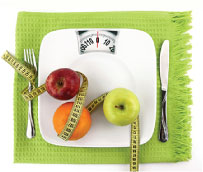 Is it a diet or a famine?
Is it a diet or a famine?
If you are already exercising like crazy and are eating far less than you deserve—but the scale doesn’t budge—you might wonder if something is wrong with your metabolism? Are you eating the wrong kinds of foods? What’s going on…?
When athletes have excess body fat to lose, they tend to lose it relatively easily. But when they get close to their race- and/or dream-weight, fat loss can slow to a crawl. That’s when frustration sets in. You might think reducing your calorie intake even more would be a good idea. No. You would deprive your body of too many nutrients, to say nothing of lack energy to perform well.
When you significantly restrict calories, your brain perceives the lack of food as a famine. Doing extra exercise makes the situation worse, especially when your body is at a low weight. With no excess fat to lose, your body conserves energy and maintains weight at a calorie intake that historically would have resulted in fat loss.
Nature protects the body from losing weight during a (perceived) famine by slowing your calorie-burn: The heart rate slows (not due to fitness but rather to lack of fuel). Blood flow to extremities slows in order to keep your organs warm. Your hands and feet feel cold all the time. The stomach/intestinal tract slows; constipation can become an issue. The hormonal system reverts to pre-adolescence. Women produce less estrogen and stop having regular menstrual periods. Men produce less testosterone. You feel excessively tired. You can muster up energy to exercise, but then are droopy the rest of the day. Fatigue becomes your middle name.
Role of genetics
When an athlete complains about lack of fat-loss despite rigid food restriction, one of my first questions is “How do you look compared to others in your genetic family? Are you leaner—or far leaner—than they are? The standard response is far leaner. Remember, the apple doesn’t fall too far from the tree. Nature’s blueprint for your body might differ from your dream physique.
Pay attention to what others say about your body. If your mom or partner says you are too thin, listen up and stop striving to be leaner yet. Rather than struggle to lose those last few pounds, gently accept your physique and be grateful for what your body does for you. It is strong, healthy, powerful, and able to do what you ask it to do (run a marathon, raise a family, train for and complete an Ironman, bike 100 miles, etc.). It is a resilient vehicle that carries you through each day. It’s good enough. Hopefully, you will not have to experience a broken leg or be diagnosed with cancer before you learn to be grateful for your body and how it allows you to walk, run, and live an active lifestyle—regardless of your size or shape.
Eat more, get fat?
You can stop the diet/famine by eating more; you will not instantly get fat. Rather, your metabolism will quickly return to normal. If your body is too thin, it will strive to restore itself to a genetic weight. This is why athletes can have a hard time staying at their “racing weights.” Being too thin is very hard to maintain.
If you believe you still have excess flab to lose, yet the scale doesn’t budge despite your strict diet, what can you do? I generally recommend eating more and exercising less. To the shock of many of my calorie-deprived clients, this tends to work better than exercising more and eating less. Sounds counter-intuitive. How can that be true?
Think of your body as being a campfire. When it has three logs to burn, it generates a lot of heat. When it has just one log, it produces just a small flame. The same with your body, the more fuel it has, the more calories you will burn.
While adding calories, focus on the benefits: how much better you feel, the power in your workouts, your happier mood, and better quality of life. If you don’t trust your body and are fearful that eating more will end up with your regaining the weight you worked so hard to lose, get help. A sports dietitian can guide you through this process. Use the referral network at SCANdpg.org to find your local expert.
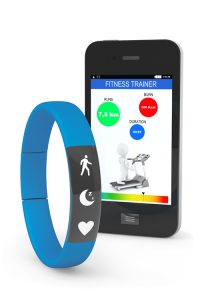 Are fitness trackers helpful?
Are fitness trackers helpful?
Fitness trackers offer information that is interesting but not precise. Something strapped on your wrist can sort of measure what your legs are doing, but many variables impact accuracy. For example, pushing a baby jogger with straight arms gives a different step count than if you were to run with freely swinging arms. (1)
As for energy expenditure, note that some of the calories reported as being burned during your workout include calories you would have burned in that hour regardless of exercise. Knowing calories burned can be dangerous… “Oh, I just burned 500 calories, so now I deserve to eat ice cream!!!” Tracking might not enhance fat loss. (2)
Your body is your best calorie counter. Instead of tracking calories to determine if you have eaten the correct amount, try listening to your body. Before you eat, ask yourself, Am I eating because my body needs fuel—or because I am bored, lonely, or stressed? … Am I stopping eating because I am satisfied? Or just because I think I should? By eating mindfully, you will not over-eat nor under-eat. You’ll simply relearn skills from childhood, when you ate when you were hungry, stopped when you were content, maintained a good weight, and never ran out of energy. Life is better when you are free from being in food-jail.
Sports nutritionist Nancy Clark MS RD CSSD has a private practice in the Boston-area (Newton; 617-795-1875), where she helps both fitness exercisers and competitive athletes create winning food plans. Her best-selling Sports Nutrition Guidebook, and food guides for marathoners, cyclists and soccer are available at nancyclarkrd.com. For her online sports nutrition workshop, co-presented with exercise physiologist John Ivy, see www.NutritionSportsExerciseCEUs.com.
References
1. Nelson et al. Validity of Consumer-Based Physical Activity Monitors for Specific Activity Types. Med Sci Sports Exercise, 48(8):1619-28, 2016.
2. Jakicic et al. Effect of Wearable Technology Combined With a Life-style Intervention on Long-term Weight loss. JAMA 316(11):1161-71, 2016



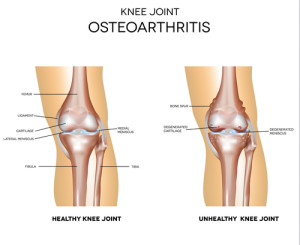 Osteoarthritis primarily affects older adults over 50. As opposed to most millennials today, this generation of adults didn’t grow up with exercise being a regular part of life. As such, there is a high degree of sedentary people who also suffer from osteoarthritis and needing joint replacement.
Osteoarthritis primarily affects older adults over 50. As opposed to most millennials today, this generation of adults didn’t grow up with exercise being a regular part of life. As such, there is a high degree of sedentary people who also suffer from osteoarthritis and needing joint replacement.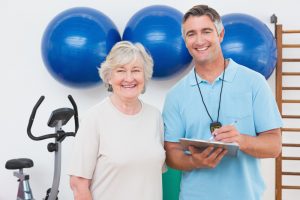 I have worked with Dr. Irv Rubenstein to put together a course like none other that will get personal trainers up to speed as quickly as possible on the essentials. We go over what happens in the joints and how they deteriorate as well as what happens during and after joint replacement surgery.
I have worked with Dr. Irv Rubenstein to put together a course like none other that will get personal trainers up to speed as quickly as possible on the essentials. We go over what happens in the joints and how they deteriorate as well as what happens during and after joint replacement surgery.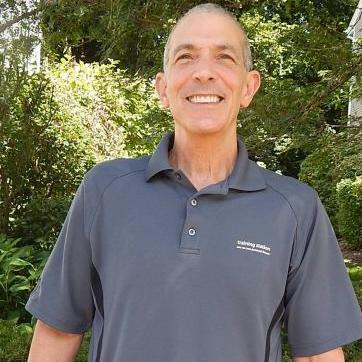
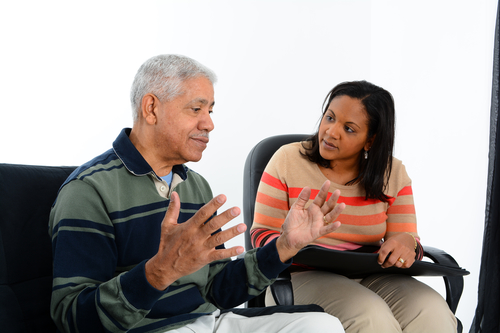
 According to the New England Journal of Medicine, “Type 2 diabetes is increasingly common, primarily because of increases in the prevalence of a sedentary lifestyle and obesity. It was concluded that the reduction in the incidence of diabetes was directly associated with changes in lifestyle and that Type 2 diabetes can be prevented by changes in the lifestyles of high-risk subjects.”
According to the New England Journal of Medicine, “Type 2 diabetes is increasingly common, primarily because of increases in the prevalence of a sedentary lifestyle and obesity. It was concluded that the reduction in the incidence of diabetes was directly associated with changes in lifestyle and that Type 2 diabetes can be prevented by changes in the lifestyles of high-risk subjects.”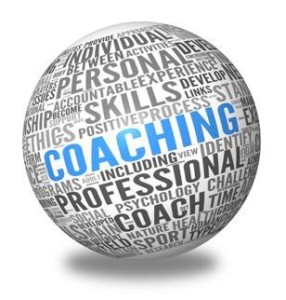 What Can Health & Wellness Coaches Do for You?
What Can Health & Wellness Coaches Do for You?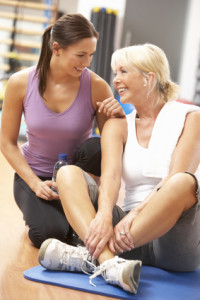

 The studies concerned with the effect of Tai Chi on
The studies concerned with the effect of Tai Chi on 
 There’s no shortage of marketing messages about what’s best for heart health and some of it is well, just plain wrong. Here’s my top 5 offenders – don’t believe their hype, choose my real deals instead.
There’s no shortage of marketing messages about what’s best for heart health and some of it is well, just plain wrong. Here’s my top 5 offenders – don’t believe their hype, choose my real deals instead. for heart health that you think – artificial dyes and chemistry lab corn syrup are not the basis of a lasting love affair. AKA better: choose a little heart-healthy organic dark chocolate (that’s >65%) and if you do want candy try authentic sweets – organic, free of artificial dyes etc – like those from our friends at
for heart health that you think – artificial dyes and chemistry lab corn syrup are not the basis of a lasting love affair. AKA better: choose a little heart-healthy organic dark chocolate (that’s >65%) and if you do want candy try authentic sweets – organic, free of artificial dyes etc – like those from our friends at 
 Rebounding is a complete cellular exercise, stimulating the activity of the lymphatic system (a critical part of the immune system). Rebounding 3-5 times per week at a minimum of 10-15 minutes at a time is highly beneficial. It is effective at a minimal bounce, using acceleration and deceleration, with each bounce, to open and close the one-way valves between the lymphatic system and the cells. Lymphatic fluid surrounds all of the cells of the body. While bounding toxins, poisons, and metabolic waste are pulled out of the cells into the lymph fluid, while oxygen and nutrients (transferred previously at the capillaries, from the blood) are pulled in the cells from the lymph fluid. Within the lymph system are lymphocytes, for example- white blood cells, which consume metabolic waste, bacteria, and dead cells. Rebounding keeps the lymph system moving and unplugged, so lymphocytes have free reign to do their job. More importantly, bounding does this without stressing the hips, knees, or ankles, or creating shin-splints. It can be done on a daily basis or multiple times per day without creating overuse injury.
Rebounding is a complete cellular exercise, stimulating the activity of the lymphatic system (a critical part of the immune system). Rebounding 3-5 times per week at a minimum of 10-15 minutes at a time is highly beneficial. It is effective at a minimal bounce, using acceleration and deceleration, with each bounce, to open and close the one-way valves between the lymphatic system and the cells. Lymphatic fluid surrounds all of the cells of the body. While bounding toxins, poisons, and metabolic waste are pulled out of the cells into the lymph fluid, while oxygen and nutrients (transferred previously at the capillaries, from the blood) are pulled in the cells from the lymph fluid. Within the lymph system are lymphocytes, for example- white blood cells, which consume metabolic waste, bacteria, and dead cells. Rebounding keeps the lymph system moving and unplugged, so lymphocytes have free reign to do their job. More importantly, bounding does this without stressing the hips, knees, or ankles, or creating shin-splints. It can be done on a daily basis or multiple times per day without creating overuse injury.

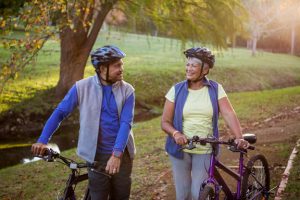 ften when we hear the term “fitness” – we automatically think of our physical health. Being mentally fit is equally as important. Cognitive fitness is a state of optimized ability to reason, remember, learn, plan and adapt that is enhanced by certain attitudes, lifestyle choices, and exercises. Better cognitive fitness translates into the ability to make better decisions, solve problems, and deal with stress and change. Neurogenesis is the process of developing new chemical messengers called neurons in the brain. This process can be profoundly affected by how you live your life. Here are eight strategies to help you facilitate the process of neurogenesis and have optimal cognitive functioning:
ften when we hear the term “fitness” – we automatically think of our physical health. Being mentally fit is equally as important. Cognitive fitness is a state of optimized ability to reason, remember, learn, plan and adapt that is enhanced by certain attitudes, lifestyle choices, and exercises. Better cognitive fitness translates into the ability to make better decisions, solve problems, and deal with stress and change. Neurogenesis is the process of developing new chemical messengers called neurons in the brain. This process can be profoundly affected by how you live your life. Here are eight strategies to help you facilitate the process of neurogenesis and have optimal cognitive functioning: Eat Specific Healthy Foods: Food plays a vital role in the health and proper functioning of the brain. Strive to eat real, whole foods such as fruit, vegetables, whole grains and lean meats – and drink eight 8oz bottles of water each day to keep brain cells hydrated. Apples, avocados, blueberries, unsalted nuts, broccoli and brown rice are great food choices for brain health.
Eat Specific Healthy Foods: Food plays a vital role in the health and proper functioning of the brain. Strive to eat real, whole foods such as fruit, vegetables, whole grains and lean meats – and drink eight 8oz bottles of water each day to keep brain cells hydrated. Apples, avocados, blueberries, unsalted nuts, broccoli and brown rice are great food choices for brain health.
 Thank you for being so honest. Your honesty brought up a topic that many people might have already touched on or made themselves aware of, but yesterday I saw another “twist.” Here is how it started:
Thank you for being so honest. Your honesty brought up a topic that many people might have already touched on or made themselves aware of, but yesterday I saw another “twist.” Here is how it started: release, meditation, whatever you want to call it. This also forces me to BREATHE deeply, which I think has more benefits to our minds than we can ever know. And just being in my own head space with my music, my movement and my breathing is what releases at least 50% of my anxiety. The workouts help me release some of the negative chaos in my head and body.”
release, meditation, whatever you want to call it. This also forces me to BREATHE deeply, which I think has more benefits to our minds than we can ever know. And just being in my own head space with my music, my movement and my breathing is what releases at least 50% of my anxiety. The workouts help me release some of the negative chaos in my head and body.”